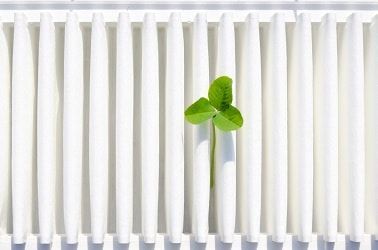Twin Cities Furnace Cleaning - Open 7 Days a Week 8AM to 8PM
Help Keep Your Air Ducts Clean: Maintain Your Air Filter
February 14, 2017
What is an air filter?
An air filter (or furnace filter) serves to stop dust, dander, and other particles from entering your furnace, and, by extension, from your air ducts and the rest of your home. The air that is moved by your heating and cooling system is circulated throughout your home several times a day. Housed in the filter compartment, and sandwiched between the end of the return duct and the blower compartment, the air filter keeps not only your HVAC system clean, but it also helps to keep your entire home clean by preventing contaminant buildup in the air ducts, which supply your household air. If your air ducts are dirty, some of that dirt necessarily will be contained in the indoor air you breathe daily. (Want to learn more about the process of air duct cleaning? Visit our air duct cleaning service page.)

What options are available for air filters?
The quality of air filters available varies greatly, and in general, you get what you pay for. A few different systems exist to rate the effectiveness of air filters, including MERV (Minimum Efficiency Reporting Value) and FPR (Filter Performance Rating). MERV, which is industry-established, tends to be the most widely used. FPR was established by the Home Depot, and its numbers align fairly closely with those of MERV. Both systems are straightforward: the higher the number, the more effective the filter (the smaller the particles blocked). Some of the common contaminants that air filters are tested for include lint, pet dander, dust, pollen, dust mites, mold spores, and bacteria.
So which one should you buy? Well, the least expensive (often fiberglass) filters can be had for as little as 50 cents or a dollar. Pass these up. They are generally not recommended, as they block only the largest of particles, allowing an unacceptable amount of debris to pass through.
This brings us to two interesting paradoxes of air filters:
- the longer a filter remains in place, the higher its effectiveness, since over time its air passages become clogged with debris, restricting even further what can pass through (but this is not a reason to leave your filter in past the manufacturer’s recommended period of time—a plugged filter will facilitate all those contaminants that should be filtered to be re-circulated into your household air).
- the more effective the filter, the harder your blower motor has to work to move air through the system, reducing the unit’s efficiency.
The take-home point: the most expensive and effective of filters, while blocking the tiniest of particles, will do so at the expense of air flow and could have the effect of overworking the blower motor and potentially causing it to burn out. Most technicians and manufacturers, therefore, recommend a medium- to high-rated air filter to reach a balance between particles blocked and ease of air flow. Aim for a MERV rating between 7 and 13. Your HVAC technician can help you determine the ideal number based on your family's needs and your HVAC system. Here’s some further reading on MERV and FPR ratings, as well as a comparison between the two.
What is “filter bypass” and what can be done about it?
A common issue that technicians observe in the field that is quite detrimental but relatively easy to fix is referred to as filter bypass. This is when dirt and debris sneak around your filter and into the A-coil and the rest of your furnace, the air ducts, and consequently, your home. This often happens when an ill-fitting or cheap furnace filter is used, or, in some cases, improper installation of the filter rack.
To prevent this, ensure that the air filter you use fits snugly into the filter compartment. If it is too small, air (and debris) will simply go around the filter instead of through it. In the case of improper installation of the filter rack, re-installation may be necessary to provide the proper fit.
One of the telltale signs of filter bypass issues in an HVAC system are supply ducts that are as dirty (or almost) as the return ducts. The air that enters the return ducts is unfiltered (remember, the air filter is positioned at the end of the return duct, before it enters the furnace) and therefore the return ducts are expected to be dirty, but the supply ducts, when the air is properly filtered, tend to be much less dirty.
And there you have it. With a system that is so essential to your family’s comfort, and that typically is costly to repair or replace, having a few common-sense nuggets of wisdom to prevent unnecessary maintenance can only be a good thing.
Wanna dig deeper? Download our free tipsheet: 10 Questions to Ask Before Hiring an Air Duct Cleaning Company.
Download Tipsheet
Many thanks to our technician Ben S. for lending his expertise to this article.
Search
Archives
April 2022
January 2022
November 2021
August 2021
July 2021
June 2021
February 2021
February 2020
April 2019
March 2019
February 2019
January 2019
December 2018
November 2018
October 2018
September 2018
August 2018
June 2018
January 2018
December 2017
November 2017
October 2017
July 2017
June 2017
May 2017
April 2017
March 2017
February 2017
January 2017
November 2016
Twin Cities Furnace Cleaning
7627 Dallas Ln N, Maple Grove, MN 55311
Highly-rated local HVAC cleaning company based out of the Twin Cities.
Open 7 days a week, 8AM to 8PM
Privacy policy found here.
Copyright 2024 Twin Cities Furnace Cleaning, Inc.
(Please note that we will take legal action against any Companies & Organizations that plagiarize our website)
